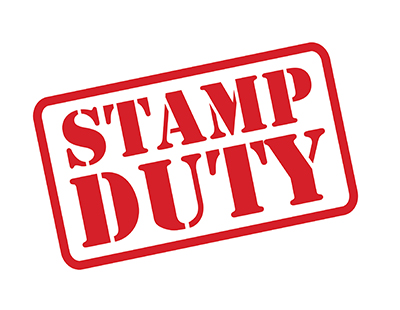A little-known law unearthed by a lettings agency may be bad news because it means some private renters are likely to have to pay more tax.
Since 2003 residential tenancies have had the potential to be liable for a form of stamp duty, although only those renters where the cumulative rent adds up to £125,000.
In other words, when a tenant has, under a continuous or successively-linked lease, paid more than £125,000 in rent, they are required to pay one per cent of the rent value as an annual tax, formally designated as stamp duty land tax.
Benham and Reeves, the agency which has brought the new tax liability to light, says this tax must be paid separately from the rent payments via a declaration form SDLT1 to the Inland Revenue within 30 days of the date the tenancy commenced or the date the lease was executed, whichever is earlier.
The agency adds that many lettings agents may not even be aware of this liability - and that’s likely to be the case for even more landlords and almost all tenants.
While £125,000 sounds like a huge number and a threshold most people are unlikely to break in the same rented home, it’s become possible in high value markets; in addition, lower churn of tenancies during the pandemic means renters are staying in situ for longer, and thus may find the £125,000 total approaching.
The director of Benham and Reeves, Marc von Grundherr, comments: “Tenants might feel they already get a rough ride - high rent payments, lack of security in their home, none of the freedoms that come with ownership, and so on - so the idea of now having to pay an ownership property tax is very unwelcome indeed.
“But unfortunately there is little they can do to change the situation should they reach this threshold, so it’s vital that tenants who believe they may reach or exceed it are aware of exactly what they owe and when.
“A good letting agent will be able to advise on this matter, but the truth is that this law is so unfamiliar to most that even your agent may not be fully aware of how it impacts you as a tenant. This additional outgoing may seem like the cherry on top of an already expensive cake, but failing to address it could be far more costly.”
Von Grundherr says that across London, the average monthly rent value is £1,597 totalling an annual payment of £19,164.
To reach the £125,000 threshold would, therefore, take 6.5 years; the average one per cent annual SDLT bill would total £192 per year.
In some parts of London, however, this threshold is likely to be exceeded in much less time than the 6.5-year average. In Kensington & Chelsea, where the average annual bill is £32,544 per year, the SDLT rental threshold would be exceeded in just 3.8 years, after which point the tenant will be required to pay an estimated annual SDLT bill of £325.
In Westminster, the average annual cost of renting is £30,336 which means the threshold would be reached in 4.1 years and the subsequent tax bill would be £303 per year; while in Hammersmith & Fulham, the average annual rent of £23,568 meaning the threshold would be met in 5.3 years and the tax bill would be £236 per year.
Benham and Reeves advises that this applies only when a renewed tenancy agreement is linked to the previous one rather than it being considered an entirely new agreement.
Want to comment on this story? Our focus is on providing a platform for you to share your insights and views and we welcome contributions.
If any post is considered to victimise, harass, degrade or intimidate an individual or group of individuals, then the post may be deleted and the individual immediately banned from posting in future.
Please help us by reporting comments you consider to be unduly offensive so we can review and take action if necessary. Thank you.
















.jpg)


.jpg)
.jpg)






Join the conversation
Jump to latest comment and add your reply
What about all the Council tenants with tenancies for life? It only takes 17 yrs at £600 pcm to hit this figure?
Having done a bit of research there is a calculation to produce the NPV which is the figure used not the actual rent paid. The NPV is lower than the actual rent and so it will take longer to get to £125k that suggested in this article.
Still potentially a problem in high rent or long term tenancies
Nice one Tricia, would you care to elaborate ?
The NPV is calculated by dividing rent in year 1 by 1+0.035; In year 2 by (1+0.035)x(1+0.035); year 3 by (1+0.035)x(1+0.035)x(1+0.035) etc
This formula means the NPV for each year becomes smaller relative to the rent so it takes longer to get to the £125k. My long term tenant will get there in 25years, but by then the 1% of the NPV will be pretty small.
Oh & guess what - social tenants are exempt!
So I would stop renting, say a month before the £125K limit comes round.
Problem solved.
Not. ideal if the house has been your home for 25 years! ! would pay the annual 1% tax on the NPV or ignore it altogether as I can't really see any way HMRC would no.
Bit of a non story except maybe in the build to rent apartments at £1000 per week!
And then restart the tenancy a month later.
That would work.
I think it would be a linked tenancy unless there was something very different in the lease and as such would not solve the problem. Even if it did I think HMRC would see it as a ruse to evade paying tax & ignore it.
Social tenants are exempt ?
Err , isn’t that a bit what’s the word ., hmm ..
Normal!
Have I missed something?
'via a declaration form SDLT1 to the Inland Revenue within 30 days of the date the tenancy commenced'
How does a tenant know that this will be due? They have only just started the tenancy!
Well Companies are able to switch people to a New Contract and the previous one don’t count, even though they were continuously employed, can’t see the difference.
Please login to comment